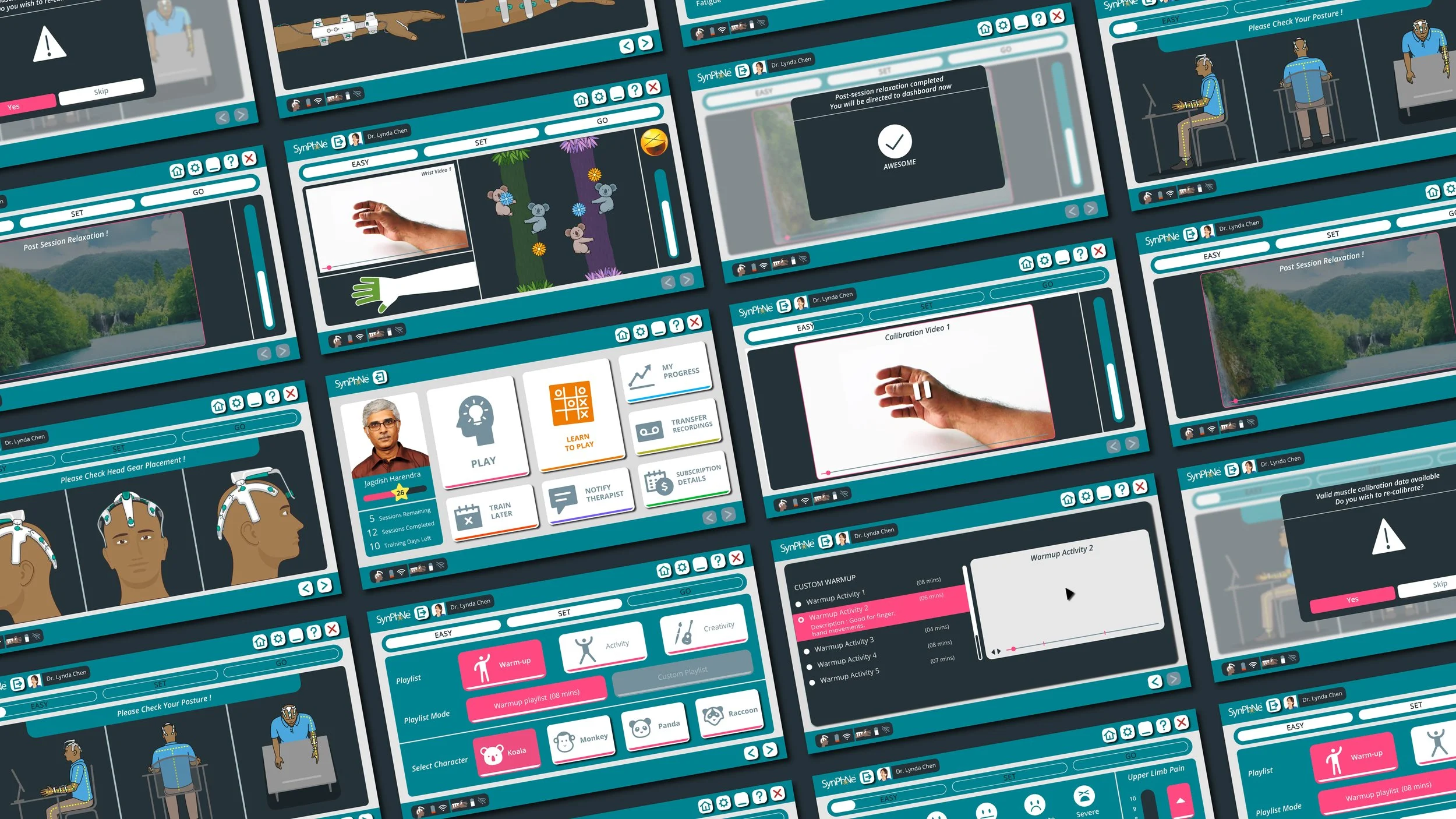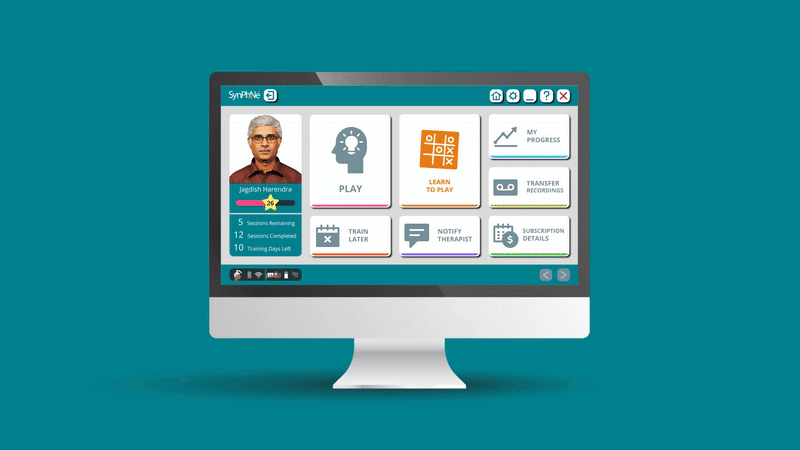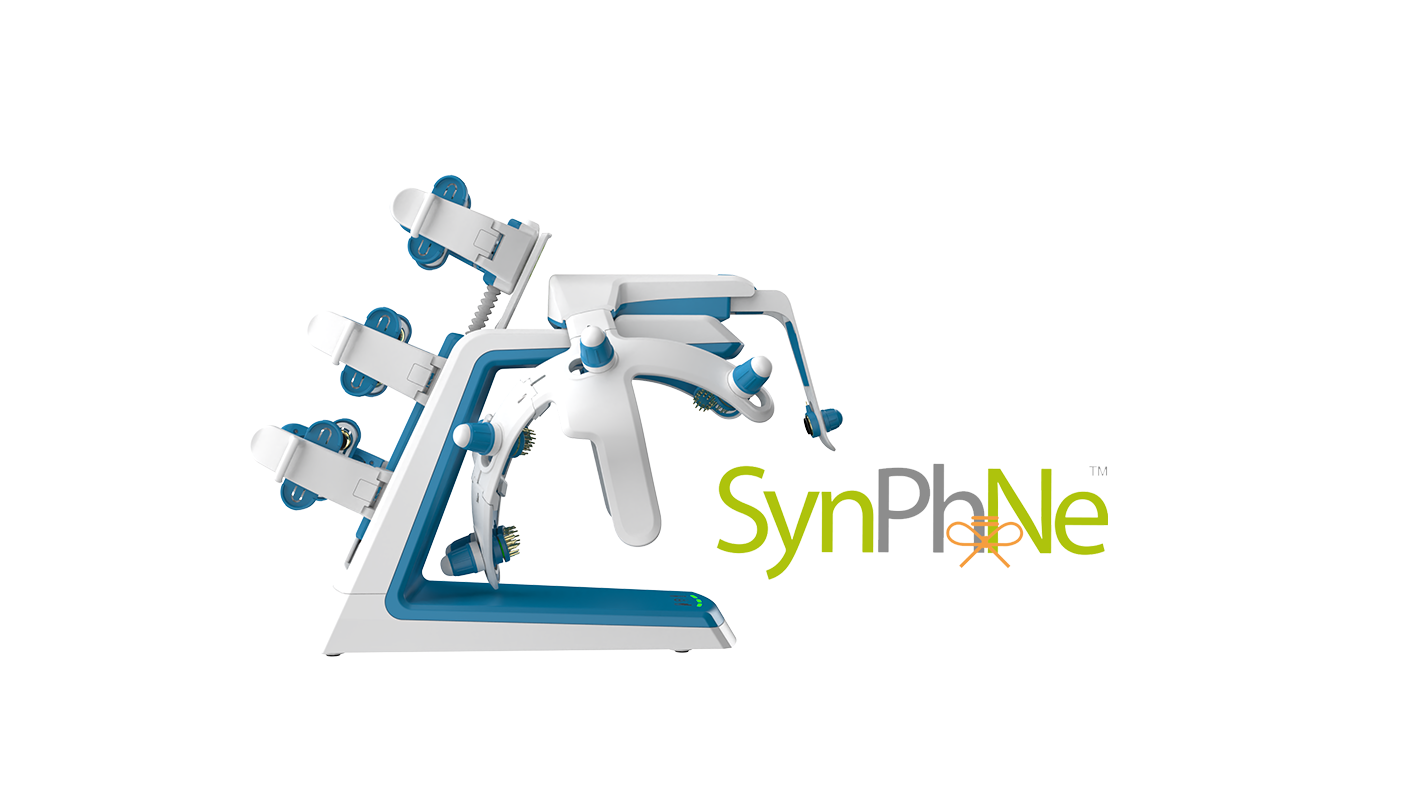UI/UX design for stroke rehabilitation wearable
Elephant Design enhanced accessibility through intuitive interface design, delivering independence-focused rehabilitation experiences for disabled users.
15+ million
potential beneficiaries
Gamified rehabilitation exercises
Infographic patient reports
Therapist workflow optimization
Multi-user interface solutions
Posture correction feedback systemDesigned an accessible application for SynPhNe's revolutionary brain-muscle training wearable, enabling stroke patients to independently set up and use the device while engaging in gamified rehabilitation exercises.Reclaiming Independence Journey
According to the WHO, 15 million people worldwide suffer strokes annually, with 5 million facing severe disability. Conventional physiotherapy shows initial promise but often plateaus in effectiveness for severe cases. SynPhNe emerged as a revolutionary solution based on neuroplasticity principles—the brain's ability to reassign functions to undamaged areas. The system combines headgear, hand-augmentation components, and specialized software working in synchronization to provide comprehensive treatment beyond traditional therapy limitations, targeting the crucial mind-body coordination that stroke patients struggle to recover.Life Restoration Mission
SynPhNe's core principle, "Get Back to Life," drives its platform-based business model focusing on user connection, comfort, and convenience. The company aims to transform rehabilitation through technology that respects patients' psychological needs while maximizing recovery potential. By creating a system that's hygienically sound, emotionally positive, visually focused, and progressively challenging, SynPhNe aspires to establish a new rehabilitation standard that adapts to individual patient progress, transcends language barriers, and provides comprehensive data management for continuous improvement of treatment outcomes.Interface Design that aids Recovery
Application interface features bold, simple visual elements with high contrast and universal icons positioned strategically for cognitive accessibility. Central information placement maintains focus while positive visuals throughout the experience encourage consistent engagement during the rehabilitation journey.Seamless Planning
Therapists can seamlessly plan sessions as per patient profile, while tracking their relevant metrics from their own dashboard. The team ensured that a wide list of protocols can be pre-programmed, customizing time slots, difficulty and more, which is tailor-made for each patient within the database.Personalizing Recovery
One of the main challenges when it came to redesigning the headgear was making it a one-size fits all type of component. Personalization is especially difficult since there is a general lack of anthropometric data when it comes to the Asian population. Data, hence, had to be collected from scratch for this to be accurate.
Different head sizes, shapes, varying lengths of hair, arm sizes, lengths, exceptional cases: an exhaustive number of factors needed to be considered before the head gear was finally developed. To enable perfect transfer of impulse and data, the sensor points have been made extremely flexible and customizable.Optimizing the Dual-User Experience
The patient interface presents essential rehabilitation tools including posture verification, instructional videos, breathing guidance bar, performance feedback via the Koala bear meter, and pain-level reporting capabilities—all accessible without assistance, empowering users with independence during recovery.
For therapists, the system provides efficient workflows to customize training programs based on individual patient needs and progress. The design incorporates data visualization through intuitive infographics, enabling therapists to quickly assess improvement patterns and make informed adjustments to rehabilitation protocols, ultimately increasing patient management efficiency. Thoughtful Visual Communication
Design solutions prioritized accessibility through logical color consistency matching hardware components, standardized interface elements, and high contrast for maximum legibility. Sans-serif typography with larger font sizes combined with universal, simplified iconography creates an intuitive experience for users with varying cognitive and physical abilities post-stroke.Similar Project











